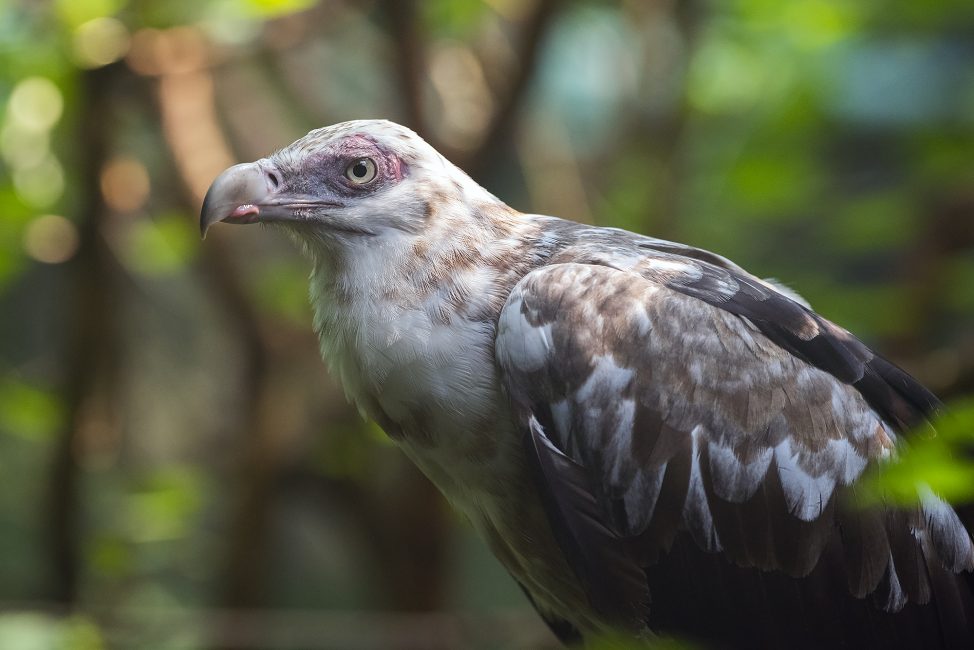
September 4, 2021
A Vulture Like No Other
- as seen by -
 Natalia Hook
Natalia Hook
September is upon us, and that means that International Vulture Awareness Day, the first Saturday of the month, is here as well. Let’s do some celebrating with a unique and fascinating species, the palm-nut vulture (Gypoheirax angolensis).
Wait… have you never heard of palm-nut vultures? Well, you’re in for quite a surprise then, so forget everything you thought you knew about vultures, and get acquainted with these amazing birds.
Standing about two feet high, and weighing in at about three pounds, palm-nut vultures are the smallest species of vulture. They are native to a fairly large range in west and central Africa, most often populating coastal regions and significant waterways. It is in these areas that oil palms, which provide the bulk of their diet, are plentiful. Yes, that’s right—these vultures live on a diet of primarily fruit in the wild. As much as sixty percent of an adult bird’s nutrition comes from oil palm fruit, also known as palm-nuts. The remainder is comprised of invertebrates such as insects and crustaceans, fish and amphibians, and occasional small mammals and reptiles. Surprisingly, the palm-nut vulture does not rely on carrion as a food source, eating dead animals only opportunistically.
Adults are easily recognizable, outfitted in striking white and black plumage with bright orangey red facial skin. Unlike vultures native to North America (black vultures, turkey vultures, and California condors), the palm-nut vulture has a feathered head. It takes five years for them to attain adult plumage. Juvenile birds transition slowly out of their brown feathers with every molt, and bear a mottled appearance for several years. At WCS’s Bronx Zoo, our young palm-nut vultures can be seen at the Pheasantry, where they are easily identified by the differences in their appearance. Our male, “Bucky,” (above) is a year older than his sister, “Ayo,” and thus is lighter in color, especially on the head and nape.
Although palm-nut vultures are indeed unique, there are some traits that they share with all other species of vulture. They are intelligent, they are strong fliers, and they are outstanding parents. A pair-bonded sire and dam nest build, incubate the single egg, and care for their chick together.
Remember, on International Vulture Awareness Day and every day, all of these beautiful birds are treasured members of the natural world, worthy of our respect and admiration.
EDITOR’S NOTE: Check out these two great resources on vulture awareness from the WCS Tanzania Program – The Value of Vultures and Vultures and Poisoning.
Nikon 810
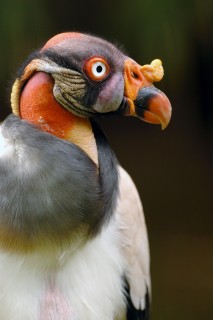
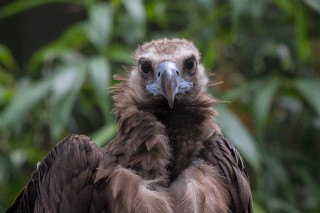
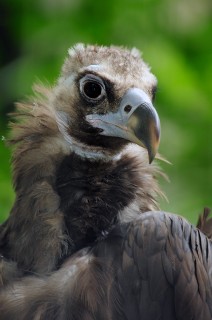
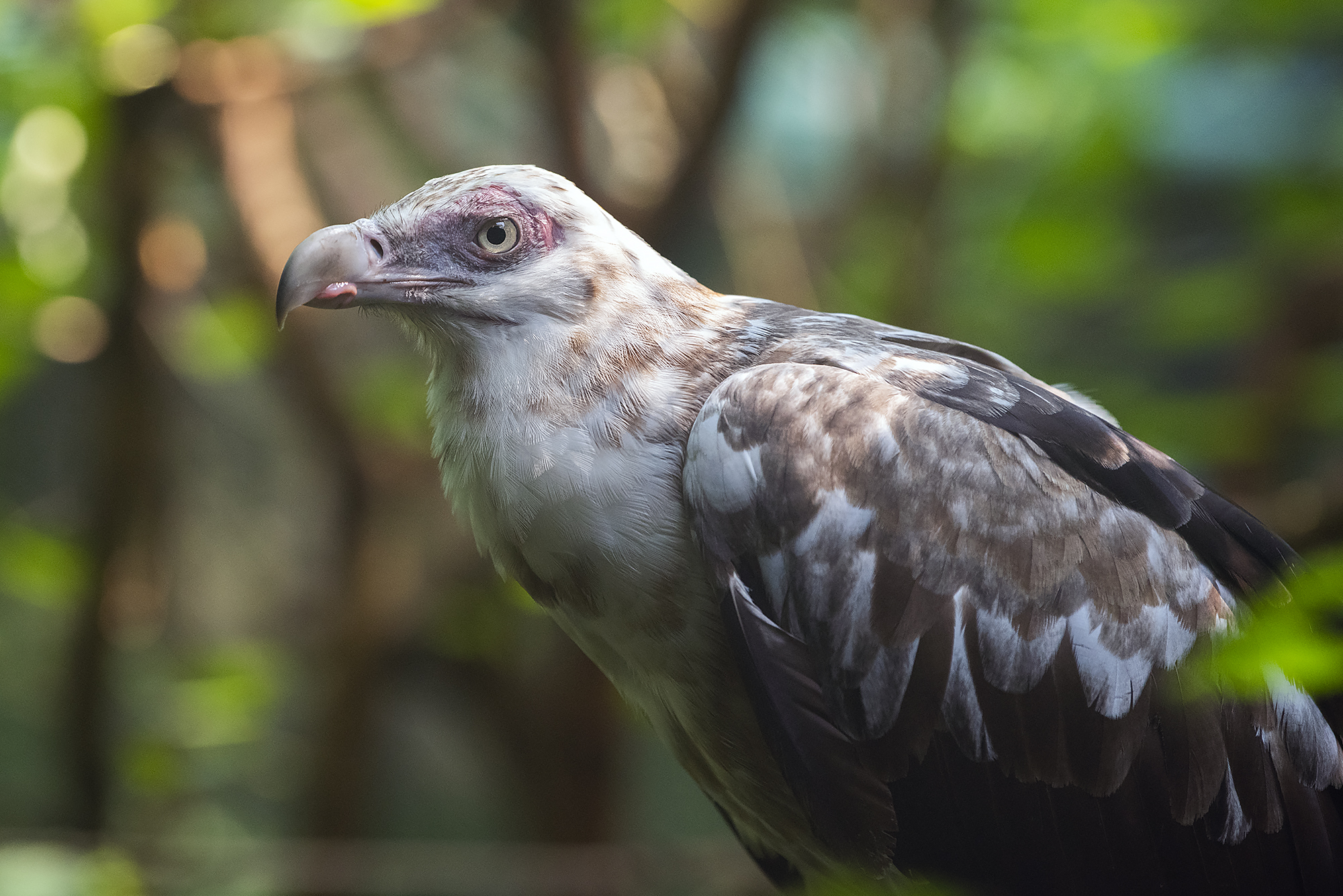
Leave a Comment
raven vs vulture
March 13, 2025 at 4:58 am
Thank you for sharing this fantastic site. Your content is incredibly helpful, and I love reading your blogs.
WCS Photo Blog
March 14, 2025 at 10:14 am
Thanks for the great feedback. We love that you appreciate a glimpse into the world of wildlife. Vulture awareness is an important subject.